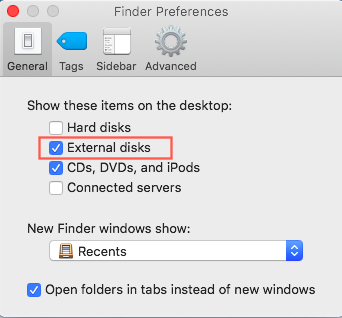

For Desktop external hard drives like Seagate Backup plus and WD Elements Desktop, make sure the external hard drive is externally connected to a power socket. You can do these things to check the power supply. So, if the external hard drive is lack of power, it won't show up on Mac.

So, if Mac not seeing your external hard drive, check if the external hard drive is properly connected by the following steps.Įxternal hard drive requires electricity to light up, spin, and transfer data. But if the connection fails, your external drive won't show up on Mac. Check the Connections of the External Hard DriveĮxternal hard drives like Buffalo Ministation, WD, Samsung, Seagate, and Lacie are connected to Mac using USB cables and ports. Then what do you do if your external hard drive is not detected by Mac? To find and access this external hard drive on your Mac, simply follow our step-by-step guide. But this doesn't necessarily mean your Mac not recognizing the hard drive. The hard drive won't appear on the desktop or in the Finder. It looks like that Mac is not reading your external hard drive.
#CHECK MY PASSPORT FOR MAC REMAING SPACE DRIVER#
The hardware and software like disk driver need an update.The external hard drive is not formatted incorrectly.The USB adapter is not working properly.The causes for external hard drives, USB pen drives, and SD cards not showing up on Mac vary from case to case. Namely, they are: But other factors can make external hard drive invisible on Mac as well. Most of the time, Mac not recognizing external hard drives is because of the hard drive corruption and faulty connections. Why is the External Hard Drive Not Showing up on Mac? Then, the external hard drive will show up on Mac again.įirst of all, let's see why hard drives not working or showing up. Take it easy and follow our guide to check the connections, macOS settings, and imperatively, the external hard drive itself. Don't know where to start? We are here to help. Don't panic! You can troubleshoot and fix the external hard drive not showing up Mac issue. On the Disk Utility screen, you will clearly see the status of storage occupied and available on your Mac.Probably, you connect an external hard drive to Mac but it is not showing up. On the next screen, type Disk Utility in the search bar and double-click on Disk Utility in the search results.ģ. Press Command + Option + Spacebar keys to open the spotlight search on your Mac.Ģ. Check Storage on Mac Using Disk UtilityĪnother way to check the status of storage on Mac is by using Disk Utility.ġ. On the next screen, you will be able to see detailed storage information on your Mac. On the next screen, right-click on Macintosh… in side menu and select Get Info option in the contextual menu.

Click on the Finder icon located in the Dock of your Mac.Ģ. Once the option to show Hard Disk in Finder side-bar menu is enabled, you will be able to check the status of storage on Mac by opening Finder.ġ. On Finder Preferences screen, select the Sidebar tab and check Hard Disks option under ‘Locations’ section. Next, click on the Finder tab in top menu bar and select Preferences option in the drop-down menu.ģ. After Hard Disk appears in Finder, you will be able to check Hard Disk Status on your Mac.Ģ. The first step is to enable Hard Disk in Finder side-bar menu. Similarly, you can click on Documents, Music and other tabs to see the amount of storage space taken up by Documents, Music and other items on your Mac. In the right-pane, you will see the storage space occupied by each Application on your Mac. On the next screen, click on Applications in the left-pane. To find more storage details, click on the Manage button.Ĥ. Within a few seconds, you will see a graphical representation of the amount of storage space used and remaining on your device.ģ. On the next screen, click on Storage and wait for your Mac to calculate the amount of storage space available on your device. Click on the Apple Logo in top menu bar and select About This Mac option in the drop-down menu.Ģ. As mentioned above, the easiest and the quickest way to get the current status of storage on Mac is to click on the Apple Logo in top menu bar.ġ.


 0 kommentar(er)
0 kommentar(er)
